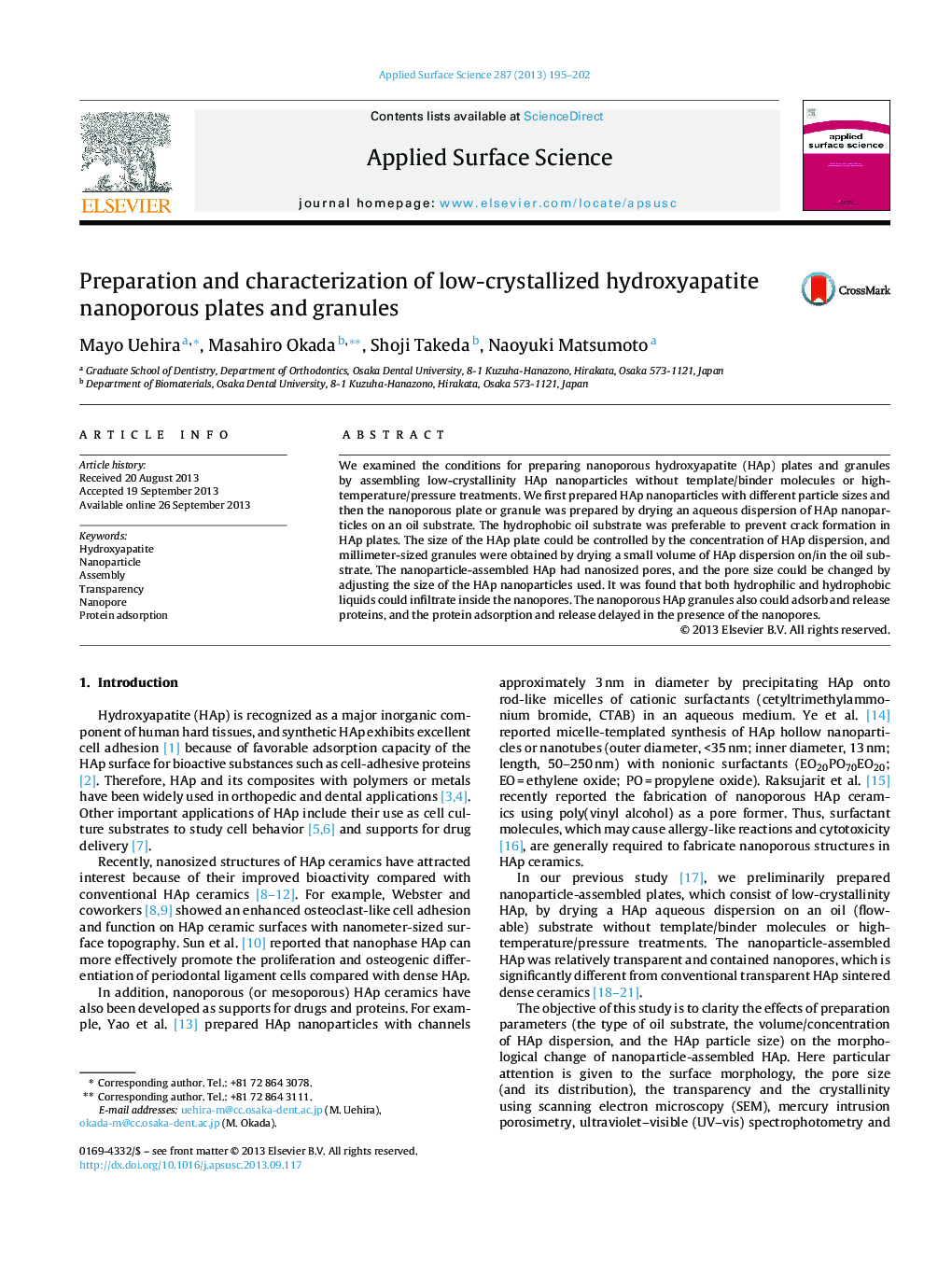| Article ID | Journal | Published Year | Pages | File Type |
|---|---|---|---|---|
| 5359378 | Applied Surface Science | 2013 | 8 Pages |
Abstract
We examined the conditions for preparing nanoporous hydroxyapatite (HAp) plates and granules by assembling low-crystallinity HAp nanoparticles without template/binder molecules or high-temperature/pressure treatments. We first prepared HAp nanoparticles with different particle sizes and then the nanoporous plate or granule was prepared by drying an aqueous dispersion of HAp nanoparticles on an oil substrate. The hydrophobic oil substrate was preferable to prevent crack formation in HAp plates. The size of the HAp plate could be controlled by the concentration of HAp dispersion, and millimeter-sized granules were obtained by drying a small volume of HAp dispersion on/in the oil substrate. The nanoparticle-assembled HAp had nanosized pores, and the pore size could be changed by adjusting the size of the HAp nanoparticles used. It was found that both hydrophilic and hydrophobic liquids could infiltrate inside the nanopores. The nanoporous HAp granules also could adsorb and release proteins, and the protein adsorption and release delayed in the presence of the nanopores.
Related Topics
Physical Sciences and Engineering
Chemistry
Physical and Theoretical Chemistry
Authors
Mayo Uehira, Masahiro Okada, Shoji Takeda, Naoyuki Matsumoto,
